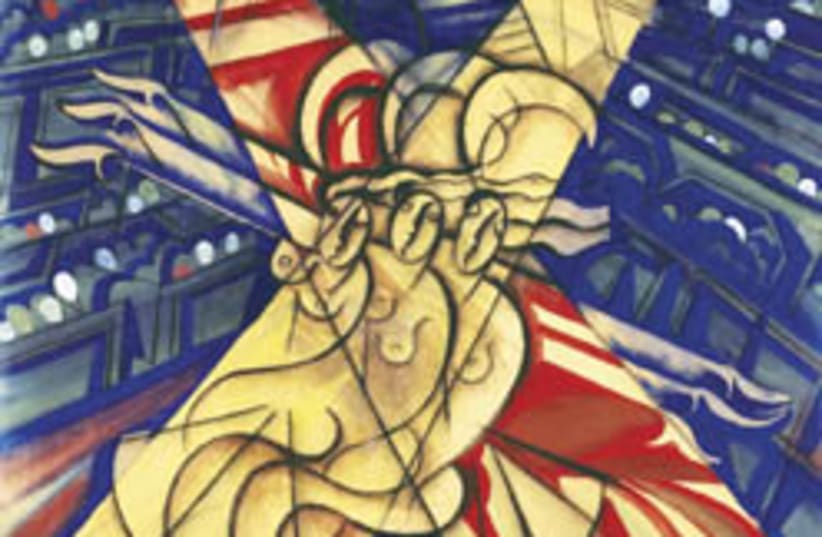Middle Europe sensibilities
Presenting artists seldom shown in Israel, the Hungarian Avant-Garde exhibit is now running at Tel Aviv's Minotaure Gallery.
'On or about December 1910 human character changed," Virginia Woolf said, referring to fundamental shifts in human perception. Evidence of this observation is present at the exhibit Hungarian Avant-Garde, currently running at Tel Aviv's Minotaure Gallery. Curated by Yaron Lavitz and Benoit Sapiro, it includes the work of eight Hungarian painters and sculptors.
Hungary, in the early twentieth century, remained somewhat disconnected culturally from its neighboring countries due to its Magyar majority and language. The advent of the modern era and break with tradition sent Hungarian artists in search of new ideas and methods to Berlin and Paris.
There they became involved in the movements of the time: Cubism, Abstract-Creation, Expressionism, Futurism and Bauhaus. Their work reflects an emphasis on abstract, non-figurative art, seeking out new materials and embracing the innovation of technology as heralding a new era for humanity.
These influences can be seen in the works chosen for the current exhibit. Joseph Csaky (1888 - 1971), one of the first artists to incorporate Cubist principles in sculpture, participated in the historic Section d'Or Cubist exhibit at the La Boétie Gallery in Paris in 1912.
Etienne Beöthy (1897 - 1961) is considered by some to be a founder of the Abstract-Creation movement created in response to the Surrealist movement. He published a book, La Serie d'Or (1939), uniting mathematics and art through a theory based on the Golden Section and Fibonacci numbers. László Moholy-Nagy (1895 - 1946) became an adherent of Bauhaus, eventually moving to Chicago in 1937 to become the director of the New Bauhaus.
His paintings, minimalist in color and geometric in form, represent his beliefs: "To be a user of machines is to be of the spirit of this century. Machines have replaced the transcendental spiritualism of past eras."
The exhibit also includes Béla Kádár, Alfred Reth, Anton Prinner, Gustav Miklosh and Hugo Scheiber.
Hungarian Avant-Garde runs through June 23 at the Minotaure Gallery, located at 100 Ben Yehuda St., Tel Aviv; (03) 522-8424. Open Sun. to Thurs. 10:30 a.m. - 7:30 p.m. and Fri. 10:30 a.m. - 2 p.m. The writer blogs at midnighteast.com
if(catID != 151){
var cont = `Take Israel home with the new
Jerusalem Post Store
Shop now >>
`;
document.getElementById("linkPremium").innerHTML = cont;
var divWithLink = document.getElementById("premium-link");
if(divWithLink !== null && divWithLink !== 'undefined')
{
divWithLink.style.border = "solid 1px #cb0f3e";
divWithLink.style.textAlign = "center";
divWithLink.style.marginBottom = "40px";
divWithLink.style.marginTop = "40px";
divWithLink.style.width = "728px";
divWithLink.style.backgroundColor = "#3c4860";
divWithLink.style.color = "#ffffff";
}
}
(function (v, i){
});

